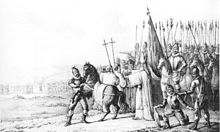
Year 1227 (MCCXXVII) was a common year starting on Friday of the Julian calendar.
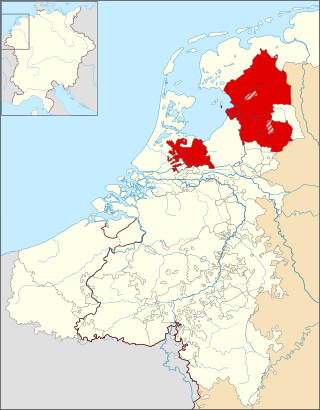
The Bishopric of Utrecht was an ecclesiastical principality of the Holy Roman Empire in the Low Countries, in the present-day Netherlands. From 1024 to 1528, as one of the prince-bishoprics of the Holy Roman Empire, it was ruled by the bishops of Utrecht. The Prince-Bishopric of Utrecht must not be confused with the Diocese of Utrecht, which extended beyond the Prince-Bishopric and over which the bishop exercised spiritual authority.

Floris V reigned as Count of Holland and Zeeland from 1256 until 1296. His life was documented in detail in the Rijmkroniek by Melis Stoke, his chronicler. He is credited with a mostly peaceful reign, modernizing administration, policies beneficial to trade, generally acting in the interests of his peasants at the expense of nobility, and reclaiming land from the sea. His dramatic murder, engineered by King Edward I of England and Guy, Count of Flanders, made him a hero in Holland.

The County of Loon was a county in the Holy Roman Empire, which corresponded approximately with the Belgian province of Limburg. It was named after the original seat of its count, Loon, which is today called Borgloon. During the middle ages the counts moved their court to a more central position in Kuringen, which is today a part of Hasselt, the modern capital of the region.
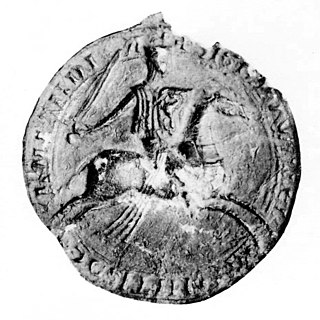
William I was count of Holland from 1203 to 1222. He was the younger son of Floris III and Ada of Huntingdon.
Dirk VII was the count of Holland from 1190 to 1203. He was the elder son of Floris III and Ada of Huntingdon.
Floris IV was the count of Holland from 1222 to 1234. He was born in The Hague, a son of William I of Holland and his first wife, Adelaide of Guelders.
The Drenther Crusade was a military campaign launched against the inhabitants of Drenthe with the approval of the Papacy in 1228 and lasting until 1232. It was led by Willibrand, Bishop of Utrecht, commanding an army composed mostly of Frisian crusaders.
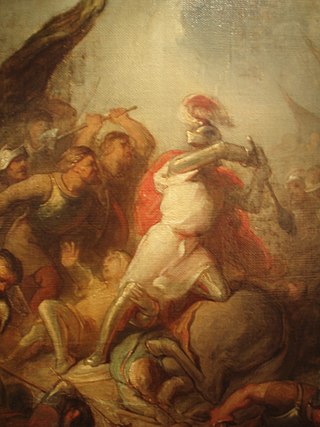
The Battle of Ane, was fought in 1227 between Otto II of Lippe, Bishop of Utrecht, and Rudolf II van Coevorden with his army of Drenths. The account of the battle comes from Quedam narracio de Groninghe de Trentis de Covordia et diversis aliis sub episcopis traiectensibus, a manuscript from the early 13th century.

Gerard III of Guelders was the Count of Guelders and Zutphen from 1207 until his death in 1229. He was a son of Count Otto I of Guelders, and is sometimes called Gerard IV or Gerard V. Gerard married Margaretha of Brabant, the daughter of Duke Hendrik I of Brabant and Matilda of Flanders, Duchess of Brabant, in 1206.

John of Nassau, German: Johann von Nassau, Dutch: Jan van Nassau was a clergyman from the House of Nassau. From 1267 to 1290 he was Bishop-Elect of the Bishopric of Utrecht as John I. He did not care much for his spiritual functions, and his government also failed due to his weak political and poor financial management. During his reign, the influence of the County of Holland in the Bishopric greatly increased. John's government was one of the worst the Bishopric had to endure; without talent and energy, slavishly surrendering to all sensual pleasures, it was never possible for him to maintain the inner peace, under which the Nedersticht in particular suffered greatly.

Bernard II was Lord of Lippe from 1167 until 1196. He founded the towns of Lippstadt and Lemgo.
Herman II, Lord of Lippe was a ruling Lord of Lippe.
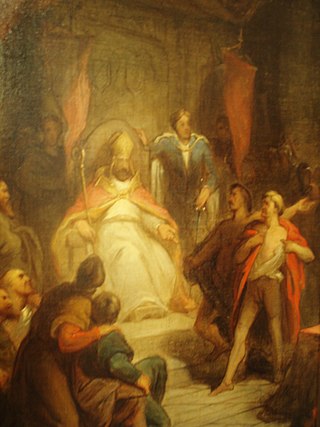
Wilbrand of Oldenburg was a bishop of Paderborn and of Utrecht.
Otto van Holland was a bishop of Utrecht from 1233 to 1249.
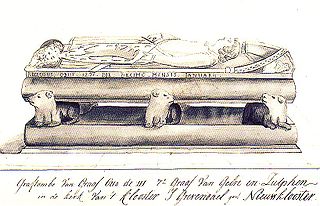
Otto II, Count of Guelders was a nobleman from the 13th century. He was the son of Gerard III, Count of Guelders and Margaretha of Brabant.
The historic Archdiocese of Utrecht (695–1580) was a Roman Catholic diocese and archdiocese in the Low Countries before and during the Protestant Reformation.
